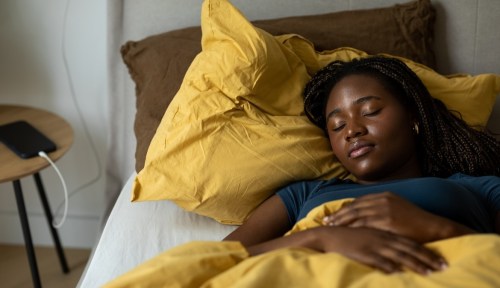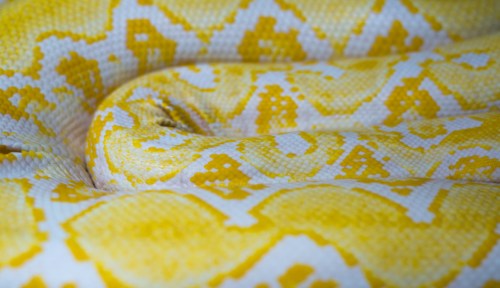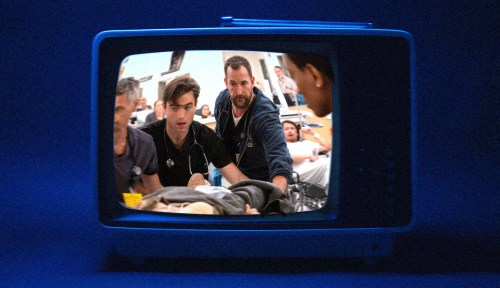Our editors independently select these products. Making a purchase through our links may earn Well+Good a commission
Our most fantastical or conceptually rich dreams tend to happen during the final of four sleep stages, which is called REM (aka rapid-eye movement) sleep. As you cycle through the sleep stages over the course of the night, this REM stage increases in length, reaching its maximum length shortly before you wake up. When you get less sleep than the optimum 7 to 8 hours, however, that typical progression is also cut short, and the REM portion often takes the biggest hit—such that when you finally do catch up on sleep, it returns with a vengeance, bringing with it more intense dreams in a phenomenon called REM rebound.
Experts in This Article
Deirdre Barrett, PhD, is a dream researcher and currently teaches two courses on dreaming at Harvard University. She is a Past President of both the International Association for the Study of Dreams and the American Psychological Association’s Div. 30, The Society for Psychological Hypnosis. Dr. Barrett has written five books: Pandemic Dreams, Supernormal Stimuli, Waistland, The Committee of Sleep, and The Pregnant Man & Other Cases from a Hypnotherapist’s Couch. She is an editor of four additional books: The New Science of Dreaming, Hypnosis and Hypnotherapy, The Encyclopedia of Sleep and Dreams, and Trauma and Dreams. Dr. Barrett has published academic articles and chapters on health, hypnosis, and dreams, and evolutionary psychology.
She is Editor in Chief of the journal Dreaming: The Journal of the Association for the Study of Dreams and a Consulting Editor for Imagination, Cognition, and Personality and The International Journal for Clinical and Experimental Hypnosis.
Rubin Naiman, PhD, FAASM, is a psychologist and clinical assistant professor of medicine at the University of Arizona Andrew Weil Center for Integrative Medicine. He specializes in sleep and dreams and is a Fellow in the American Academy of Sleep Medicine. By merging scientific with psychological and spiritual approaches, Dr. Naiman has become a leader in the development of integrative approaches to sleep health.
To grasp how, exactly, REM rebound occurs and why it can deliver such vivid dreams, it’s helpful to know how REM typically shows up (when it’s not rebounding). On a night of average sleep, in which you’re not making up for any sleep deprivation, you’d typically get five minutes of REM at the end of the first 90-minute sleep cycle, 10 minutes at the end of the second, and so on, until you’re getting somewhere around 45 minutes at the very end of the night, which is when you’d experience most dreaming, says psychologist and dream scientist Rubin Naiman, PhD. “In this case, you’re rhythmically moving through all the stages of non-REM sleep, being dipped into more profound levels of serenity and deep sleep before the dreaming process really begins,” he says.
“REM rebound is when REM sleep shows up earlier in the night and to a greater depth and intensity, even displacing deep sleep in the process.” —Rubin Naiman, PhD, psychologist and dream scientist
By contrast, once you start to experience some sleep deprivation—say, cutting back from your usual seven hours of sleep to five hours per night for a few nights in a row—the body starts to prioritize deep sleep (the last stage of non-REM) over REM, says Dr. Naiman, leading you to experience shorter and shorter periods of REM sleep. (The same is true if you’re frequently waking up during the middle of the night, which often happens right at the onset of REM, essentially cutting it off and bringing you back to the beginning of your sleep cycle whenever you fall back asleep, Dr. Naiman adds.)
The result? REM becomes “increasingly pressurized, and starts to push back against that deficit, leading eventually to REM rebound, which is when REM sleep shows up earlier in the night and to a greater depth and intensity, even displacing deep sleep in the process,” Dr. Naiman says.
Scientists have identified this particular rebound phenomenon by selectively depriving (consenting) folks of REM sleep in a sleep lab (that is, waking them up every time their brain waves showed them dipping into REM sleep), and then monitoring their sleep afterward, says dream scientist Deirdre Barrett, PhD, author of The Committee of Sleep and Pandemic Dreams. But, in a non-lab setting, she caveats, REM rebound (and its vivid dreams) may require greater levels of deprivation to show up. Remember how the body first prioritizes catching up on non-REM sleep after a bit of sleep loss? That’s likely why sleepers deprived of only a couple hours of sleep usually experience only non-REM rebound, says Dr. Barrett, whereas those getting anywhere from 12 to 24 hours of sleep deprivation are far more likely to experience REM rebound and the more intense dreams that come with it.
Why sleep deprivation and the resulting ‘REM rebound’ can trigger more vivid dreams
As the body begins to make up for lost REM sleep by moving you more quickly into REM during the nights following sleep loss, you’ll also experience this dreaming stage more intensely—which may be why recreating REM rebound has become such a popular lucid dreaming technique. “On nights when we’re catching up on sleep, we have greater ‘REM density,’” says Dr. Barrett. “This means that both the eye movements in this stage and the brainstem electrical activity causing them will increase, all of which is correlated with more intense dreams.”
Usually, these dreams arising during REM rebound aren’t exactly great or high-quality, according to Dr. Naiman. “In regular REM sleep, the brain acts like a second gut, [metaphorically] chewing and digesting waking-life experiences and consolidating those memories as dreams,” he says.
But in REM rebound? It’s almost like you’re fast-forwarding that process, with dream content showing up in “bursts or quick releases, in a way that’s not comfortable or rhythmic,” he says. In other words, you’re having dreams in a haphazard or jarring way, without being able to really digest the material.
The longer you sleep on your catch-up days after sleep loss, the more potent that effect can be. “Each REM period through the night is longer than the one before, so anyone sleeping longer than eight hours as they catch up will also have extra-long REM periods not seen on other nights,” says Dr. Barrett. And with that additional time in REM, the brain can spin more elaborate dreams to boot.
So, getting back to your regular dreamy programming will often require first getting back to your regular sleep schedule, as the two go hand-in-hand. While improving your sleep hygiene (aka turning down the temperature in your bedroom, avoiding screens at night, and the like) can certainly go a long way toward doing just that, Dr. Naiman also suggests reframing your perspective of bad dreams as sources of internal wisdom, rather than something to fear or distrust: “Difficult experiences are an essential part of a good life, and dreaming is simply our way of breaking down and assimilating those experiences.”
Sign Up for Our Daily Newsletter
Get all the latest in wellness, trends, food, fitness, beauty, and more delivered right to your inbox.
Got it, you've been added to our email list.











